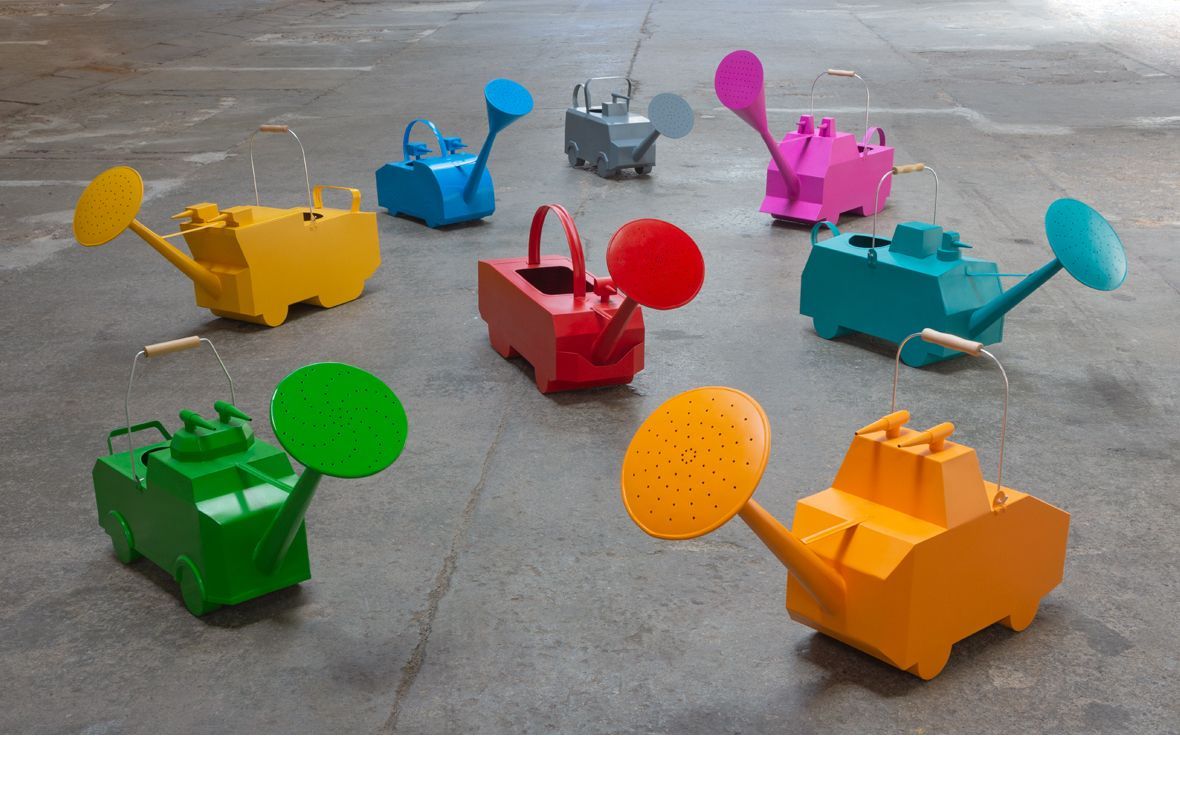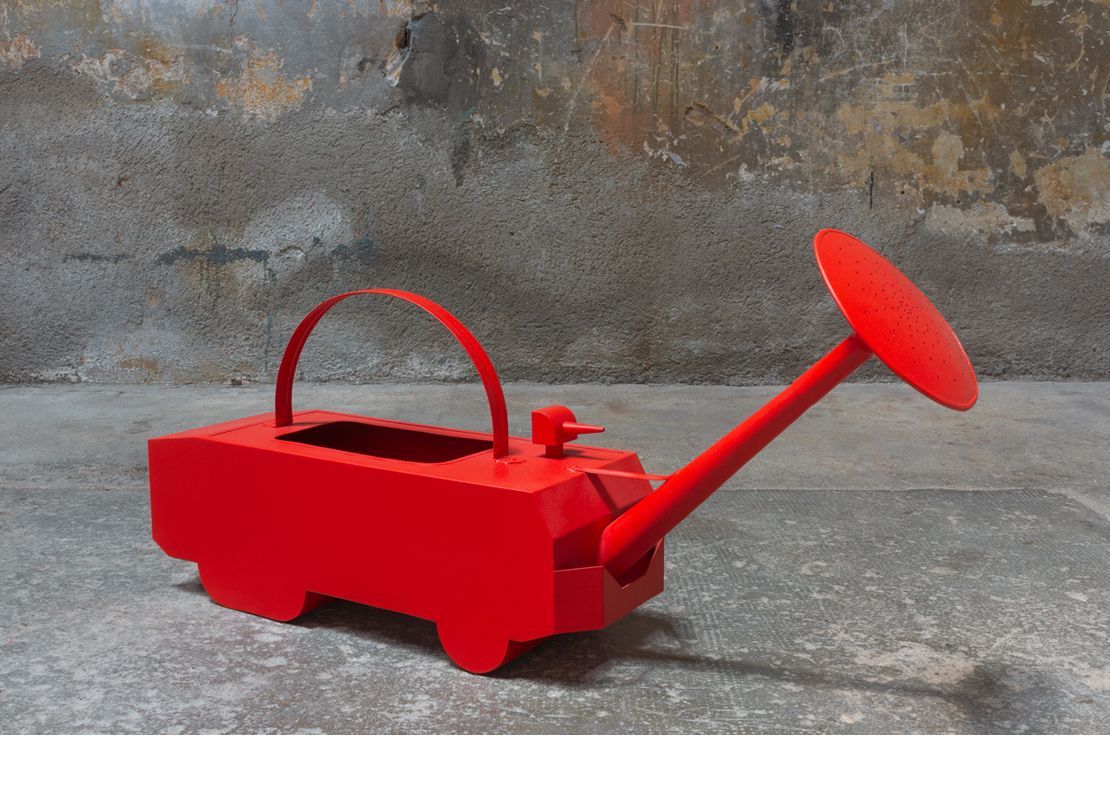Regaderas 2019
Sculptures
Variable dimensions
REGADERAS is a sculptural installation that reconfigures the water cannon truck, an emblematic vehicle of state repression in contexts of protest and social unrest, transfor ming it into a household object: a garden watering can. This symbolic shift juxtaposes two antagonistic but equally meaningful imaginaries: the repressive machinery of power and the everyday act of care. Through this tension, a hybrid form emerges that deactivates the inherent intimidation of the original object, opening space for new interpretations.
The work is based on the observation of a global phenomenon: the increasing criminalization of dissent, the normalization of institutional violence, and the deep economic, social, and political inequalities that fuel protests. From student mobilizations in Latin America, the Black Lives Matter movement in the United States, the 15M protests in Spain, to recent uprisings in Iran, Colombia, and Chile, demonstrations have been met with increasingly sophisticated repressive devices. These uprisings are a reaction to oppression, lack of access to basic services, government corruption, and the marginalization of various social sectors. In this context, the water cannon truck becomes an icon of authority and repression—a symbol that REGADERAS seeks to subvert through humor and irony.
The proposal is not limited to a replica of the riot vehicle; it reimagines its reverse: sculptures with soft, everyday, and unlikely forms. Installed in the exhibition space, each watering can simultaneously evokes threat and ordinariness, the police and the domestic. This ambiguity creates a deliberate disorientation, blurring the line between a control machine and a simple household utensil. In doing so, it invites questioning of automatic perceptions of urban order and its mechanisms of control.
REGADERAS does not aim to be a direct denunciation but rather a displacement of meaning. Its aesthetic, based on the common, playful, and absurd, acts as a critical strategy to question imaginaries of power and activate new ways of seeing. The watering can, a simple and everyday object, becomes an act of symbolic disobedience.
Halfway between political art and visual poetry, these sculptures function as devices of memory and possibility. In a present saturated with aestheticized violence, REGADERAS proposes an intervention that does not impose but also does not forget; that moves away from direct confrontation to act with subtlety, humor, and irony. In this way, it challenges symbols of power by reconfiguring them from the everyday, inviting us to imagine less armored futures and reconsider ways of inhabiting the public sphere from a symbolic perspective.











